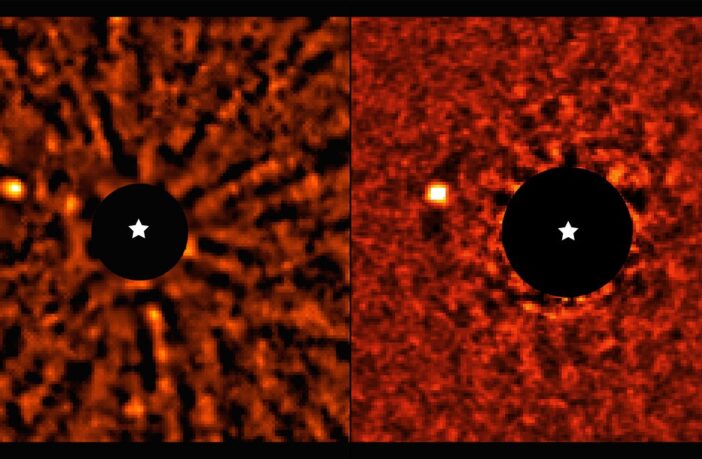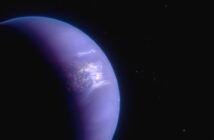Two international group of researchers, one including Dr Mariangela Bonavita of the OU, have used the SPHERE planet-finder at the Very Large Telescope in Chile to capture images of a giant (Jovian) planet.
The images are featured today as “Picture of the Week” by the European Southern Observatory.
The planet, that has a mass of about five times that of Jupiter, orbits the young star AF Lepus, which is part of a group of stars moving together, the Beta Pictoris Moving Group, 115 light-years from Earth.
“AF Lepus b is one of the smallest directly imaged planets” says Dr. Dino Mesa, from the Astronomical Observatory of Padova, who led one of the teams.
“It is also one of the closest” adds Dr. Bonavita “with an orbital distance close to that of Saturn from the Sun.”
“This is an interesting system in many respects” adds Dr. De Rosa from the European Southern Observatory, who led the second team of researchers who imaged AF Leporis b “and since our images were obtained within days of one another, we decided to collaborate and announce this exciting results together. “
But why is AF Leporis so popular among the planet hunters?
“Planets exert a gravitational tug on their host stars, perturbing their trajectory on the sky. explains Dr. Bonavita “and these perturbations show as changes in the stellar position and motion.”
“Our teams found that the star AF Leporis exhibited such a disturbed trajectory” adds Dr. Mesa “by studying star catalogues from the European Space Agency’s Hipparcos and Gaia satellites, two missions that over the years have accurately pinpointed the position and motion of stars in our galaxy using astrometry. “
“We call these accelerating stars, and AF Leporis b is the smallest planet imaged around one of them. says Dr. Bonavita “We thought that observing the nearest youngest of those with SPHERE we would have a higher chance of detecting planets similar to Jupiter, and we were right!”
The AF Lepus system in bares striking resemblance with our Solar System and since, like the other members of the Beta Pictoris Moving Group, is only 24 million years old, studying it could help to shed light on how our own Solar System was formed.
“While it is not exactly an analogue of Jupiter in our own solar system “says Dr. De Rosa “it is closer than most of the other directly imaged planetary systems.”
The two publications detailing the discovery will be appear together in Astronomy & Astrophysics.
“This result is yet another proof that incredible results can be achieved combining data from ground and space-based facilities” concludes Dr. Bonavita “and I can’t wait to see what the future holds.”
Further information:
- Scientific articles, accepted for publication in Astronomy & Astrophysics: Mesa et al. (2023), De Rosa et al. (2023)
- Video showing the atmospheric features in this exoplanet.



